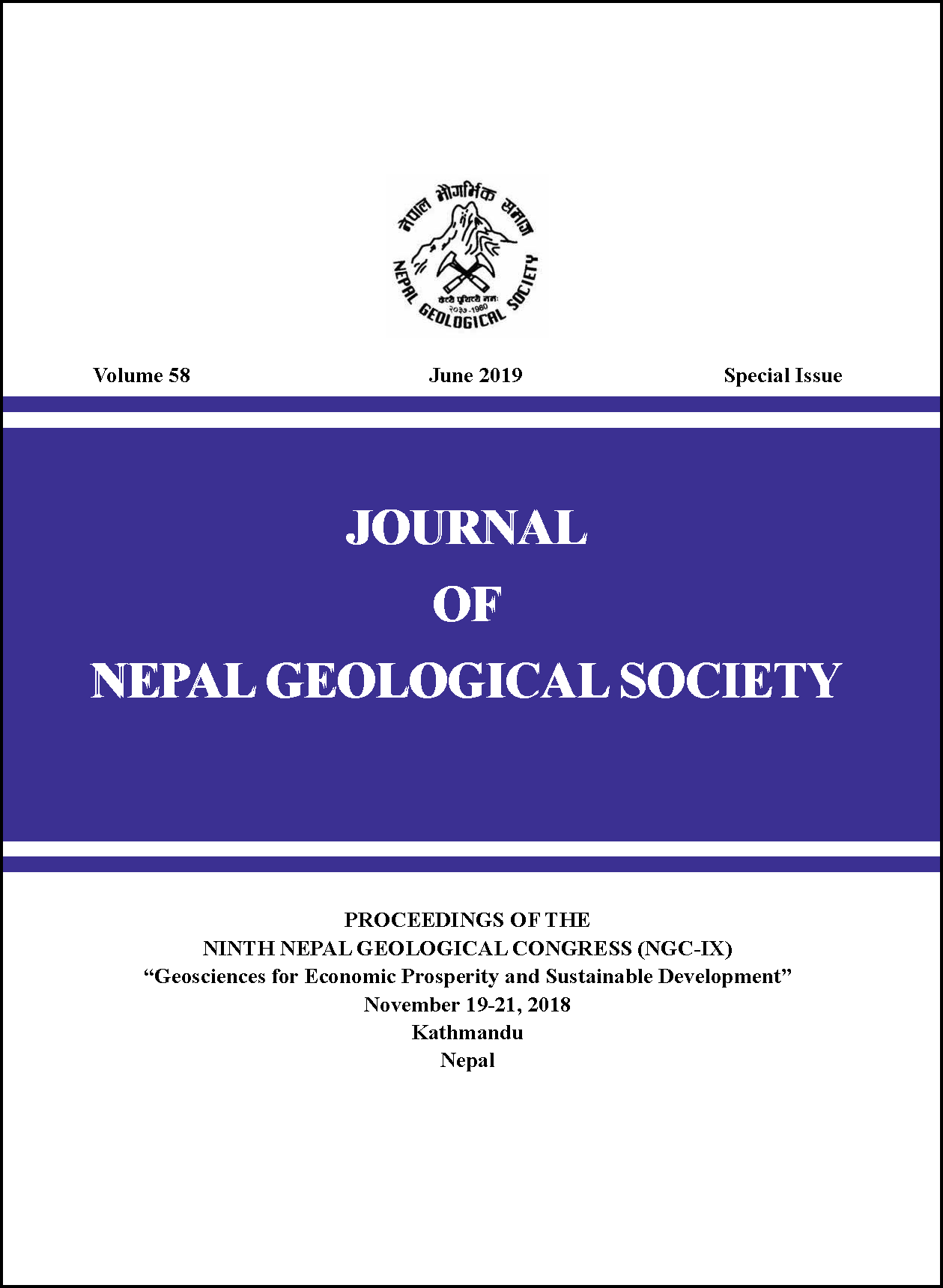Geology and mineral resources of Khudi-Bahundanda area of west-central Nepal along Marshyangdi Valley
DOI:
https://doi.org/10.3126/jngs.v58i0.24592Keywords:
MCT zone, Metamorphism, Shear sense indicators, Gemstones, Marshyangdi ValleyAbstract
Geological study was carried out along the Khudi-Bahundanda area of the Marshyangdi Valley in the west central Nepal. The area lies partly in the Main Central Thrust (MCT) zone and partly in the Higher Himalayan Crystalline Zone. The aim of the study was to prepare a detail geological map and cross section in the scale of 1:25,000 to work out on stratigraphy, metamorphism and mineral resource potential of the area. The rocks of the Higher Himalaya have been mapped under a single unit as Formation I. This unit consists of kyanite-garnet para-gneiss. The lithological units of the MCT zone are mapped into three units as the Benighat Slate, the Malekhu Formation and the Robang Formation from the bottom to the top, respectively. The Benighat Slate consists of dark grey to black schist with some carbonate beds as members. The Malekhu Formation consists of creamy white siliceous dolomite marble with parting of schist. The Robang Formation comprises of light grey psammitic schist with garnet and white micaceous quartzite in various proportion.
Many secondary structures are observed in the study area, but primary structures are missing due to extreme metamorphism. The large-scale structures are the MCT, which separates the Lesser Himalayan rocks to the south from the Higher Himalaya to the north, and the Bahundanda Thrust (BT). Numerous outcrop-scale structures like meso-scale folds, quartz veins, boudinage and ptygmatic folds are abundant. Folds in the MCT zone are mostly E-W trending, and rocks have experienced multiple metamorphism and dynamic crystallization of minerals. The Lesser Himalayan rocks resemble the garnet zone while the Higher Himalayan rocks resemble to the kyanite grade of metamorphism. As in the other sections of the Himalaya, the present section also clearly shows the inverted metamorphism in the MCT zone. The MCT zone is considered as the potential site for precious and semi-precious stones, of which the most potential ones are the garnet and kyanite.
Downloads
Downloads
Published
How to Cite
Issue
Section
License
© Nepal Geological Society




